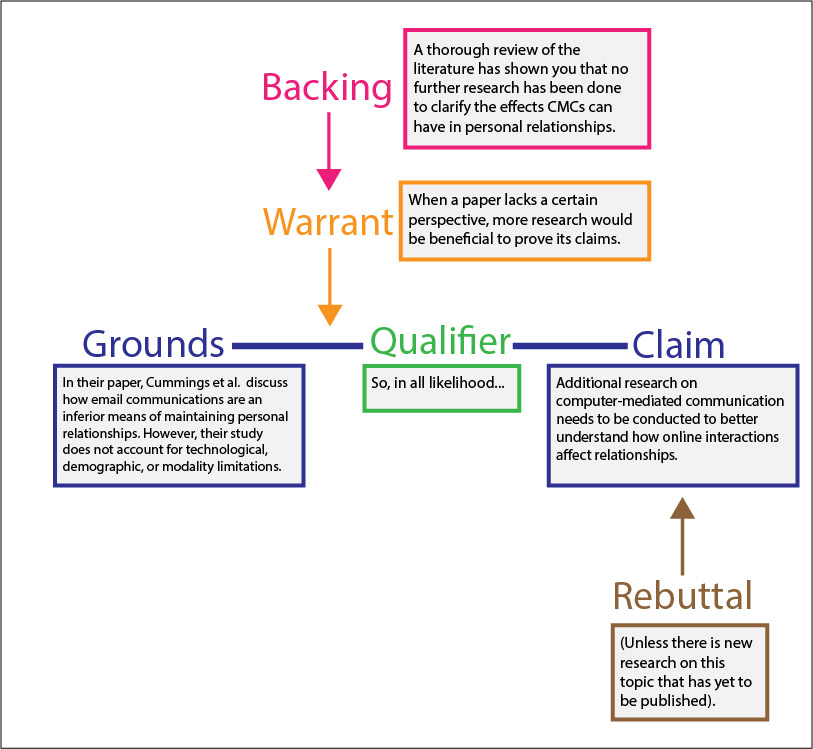Toulmin argument
Created by Stephen E. Toulmin, this model consists of 6 elements:
- Claim
- an assertion one would like to prove, so it is the main argument
- Grounds
- the data, the evidence, and facts that support the claim
- Warrant
- an assumption that links the ground to the claim (is often implicit)
- Backing
- additional support of the warrant, because often the warrant is implicit, so backing gives a specific justification
- Qualifier
- shows the limits to which the argument is true. It is words like ‘some’, ‘many’, presumably’ that help the audience to understand when you claim may not be correct
- Rebuttal
- presenting another valid point of view on the discussed case
As a system, this model looks like this:

There is a great video with an explanation of this model but if you don’t want to go through it fully, here is a similar example to the one that was presented in the video.
People should use bikes instead of cars (CLAIM) when travelling somewhere nearby (QUALIFIER) as cars are a huge resource of air pollution (GROUND). In 2017 80% of air pollution was due to the use of cars (GROUND). Bikes, on the other hand, are very eco-friendly as the only resource you need to ride a bike is the bike and yourself. (WARRANT) Moreover, bikes are useful for people’s health as riding a bike requires some physical work. (BACKING) Of course, sometimes it is impossible to use a bike because of the long travelling distance so in this case, the use of a car is reasonable. (REBUTTAL).
Rogerian method
Elements of the argument using Rogerian model:
- Introduction
- an objective introduction of the issue, similar to Claim in the Toulmin model
- Opposing view
- present the other side’s positing without any biases
- Statement of validity
- acknowledge how and why, under what circumstances the opposing view can be true but still connect it to your argument
- Statement of your position
- explain your point of view in details
- Statement of context
- describe the scenarios when your position is beneficial because when you explain why and when your argument is appropriate, the audience understands that there are multiple approaches to the issue and there are cases when your idea fits the best
- Statement of benefits
- explain to the opposing side why they would benefit from accepting your point of view, focus on the advantages of your argument
An example:
Introduction: The issue of whether children should wear school uniforms is subject to some debate.
Opposing View: Some parents think that requiring children to wear uniforms is best.
Statement of Validity: Those parents who support uniforms argue that, when all students wear the same uniform, the students can develop a unified sense of school pride and inclusiveness.
Statement of Your Position: Students should not be required to wear school uniforms. Mandatory uniforms would forbid choices that allow students to be creative and express themselves through clothing.
Statement of Contexts: Even if uniforms might hypothetically promote inclusivity, in most real-life contexts, administrators can use uniform policies to enforce conformity. Students should have the option to explore their identity through clothing without the fear of being ostracized.
Statement of Benefits: Though both sides seek to promote students’ best interests, students should not be required to wear school uniforms. By giving students freedom over their choice, students can explore their self-identity by choosing how to present themselves to their peers.